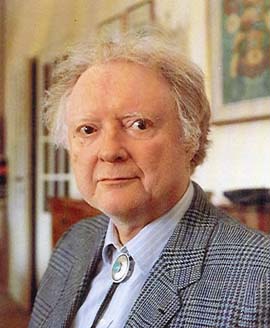Tullio Regge facts for kids
Quick facts for kids
Tullio Regge
|
|
|---|---|
 |
|
| Born | 11 July 1931 Borgo d'Ale, Italy
|
| Died | 23 October 2014 (aged 83) Orbassano, Italy
|
| Alma mater | University of Turin |
| Known for | Regge theory Regge calculus Regge–Wheeler–Zerilli equations |
| Awards | Dannie Heineman Prize for Mathematical Physics (1964) Albert Einstein Award (1979) Pomeranchuk Prize (2001) |
| Scientific career | |
| Fields | Theoretical physics |
| Institutions | Max Planck Institute for Physics University of Turin Institute for Advanced Study Polytechnic University of Turin |
| Doctoral advisor | Robert Marshak |
Tullio Eugenio Regge (born July 11, 1931 – died October 23, 2014) was a brilliant Italian scientist who studied physics. He was known for his amazing ideas about how the universe works, especially in areas like relativity and quantum physics. He helped us understand complex things like gravity and the tiny particles that make up everything.
Contents
About Tullio Regge
Tullio Regge was born in Italy in 1931. He loved learning and earned his first degree in physics from the University of Turin in 1952. Later, he went to the University of Rochester in the United States and got his PhD in physics in 1957.
After his studies, Tullio Regge worked at important places like the Max Planck Institute for Physics in Germany. He also worked at the Institute for Advanced Study in the United States. He became a professor at the University of Turin in Italy, teaching about relativity. Even after he retired, he continued to work as a visiting scientist at CERN, a famous research center. Tullio Regge passed away in 2014. He was married to Rosanna Cester, who was also a physicist, and they had three children.
His Big Ideas in Physics
In 1959, Tullio Regge made an important discovery about how particles scatter, or bounce off each other. He found a special mathematical way to describe this. This idea is now called Regge theory. It helps scientists understand how tiny particles interact at very high energies.
In the early 1960s, Regge came up with another big idea called Regge calculus. This was a new way to think about general relativity, which is Albert Einstein's theory about gravity. Regge calculus helps scientists use computers to study how space and time behave. It was one of the first ways to use math to simulate gravity in a step-by-step way.
Later, in 1968, he worked with G. Ponzano to create a quantum version of Regge calculus. This is known as the Ponzano-Regge model. It was a very early step towards understanding quantum gravity, which tries to combine gravity with the rules of quantum physics.
Beyond Science: Design
In the mid-1960s, Tullio Regge even used his mathematical skills to help design furniture! He worked with a company called Gufram. He took a complex mathematical shape and turned it into a chair called the "Detecma seat." This shows how his brilliant mind could find connections between very different fields.
Awards and Recognitions
Tullio Regge received many awards for his important work in physics. Some of these include:
- The Dannie Heineman Prize for Mathematical Physics in 1964.
- The Albert Einstein Award in 1979.
- The Cecil Powell Medal in 1987.
- The Dirac Medal in 1996.
- The Marcel Grossmann Award in 1997.
- The Pomeranchuk Prize in 2001.
In 1982, he was chosen to be a member of the American Philosophical Society. This is a very old and respected group that honors important thinkers.
Serving in Politics
In 1989, Tullio Regge was elected to the European Parliament. This is a group of people who make laws for the countries in Europe. He served there until 1994. It's not common for a scientist to also be a politician, but Regge wanted to help society in different ways. He also led a group in Turin that worked to prevent problems for people with disabilities.
Named After Him
Two important scientific ideas are named after him: Regge theory and Regge calculus. Also, there's even an asteroid in space named after him! It's called 3778 Regge.
Books by Tullio Regge
Tullio Regge also wrote many books, often explaining complex science in ways that people could understand. Some of his books include:
- Lettera ai giovani sulla scienza (Letter to Young People about Science), 2004
- Spazio, tempo e universo. Passato, presente e futuro della teoria della relatività (Space, Time, and Universe: Past, Present, and Future of Relativity Theory), 2003
- L'universo senza fine. Breve storia del Tutto: passato e futuro del cosmo (The Endless Universe: A Short History of Everything: Past and Future of the Cosmos), 1999
- Non abbiate paura. Racconti di fantascienza (Don't Be Afraid: Science Fiction Stories), 1999
- Infinito (Infinity), 1996
- Gli eredi di Prometeo. L'energia nel futuro (The Heirs of Prometheus: Energy in the Future), 1993
- Le meraviglie del reale (The Wonders of Reality), 1987
- Dialogo (Dialogue), with Primo Levi, 1987
- Cronache Dell'Universo (Chronicles of the Universe), 1981

